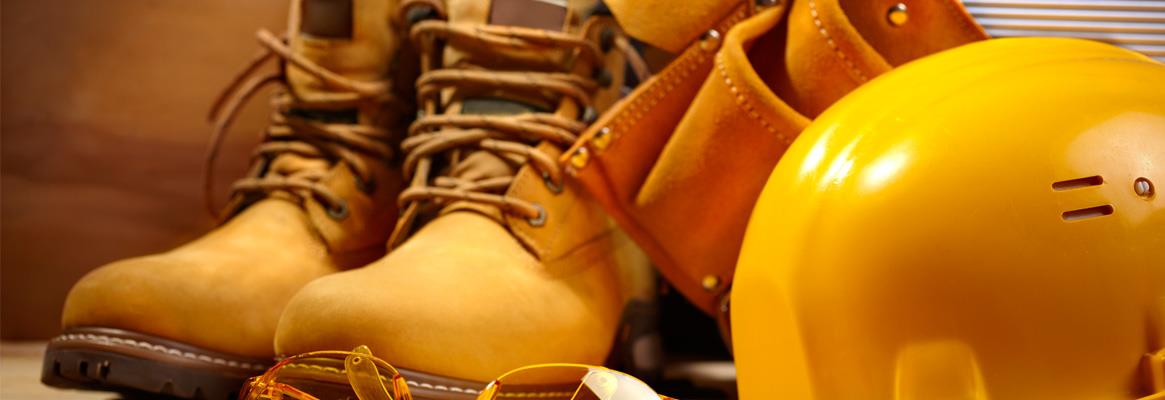Shoes are typically thought of by most of us as nothing more than a fashion item, but they have a role to play in every part of society and every industry. No matter who we are, we put them through a lot; which means how they are put together can be very important.
The construction of a shoe has a substantial effect on their longevity and price. The construction largely refers to the way in which the sole is attached to the upper of the shoe, and while the materials and brand play a big part in the cost of a shoe, the construction is actually one of the biggest determining factors.
When a shoe goes beyond fashion and becomes part of someone's job, it becomes even more important. Safety boots and work footwear exists to protect the feet of the owner and suffer some pretty hard treatment. When it is put through such a lot, it is important to make sure that the shoe or boot is well put together in order to do its job properly.
Blake Welting
 The welt is the strip of leather that runs around the outsole, and is used to attach it to the upper of the shoe. Welting is therefore the process of fixing the two together, and the Blake method is considered to be the simplest way to do this, as the upper is wrapped around the insole and then attached between the in- and outsole. The stitching involved in this method is found on the inside of the shoe, meaning it can only be done by machine.
The welt is the strip of leather that runs around the outsole, and is used to attach it to the upper of the shoe. Welting is therefore the process of fixing the two together, and the Blake method is considered to be the simplest way to do this, as the upper is wrapped around the insole and then attached between the in- and outsole. The stitching involved in this method is found on the inside of the shoe, meaning it can only be done by machine.
The simplicity of this means of construction inevitably makes it cheaper. It can often be a popular choice because it does mean that when the sole eventually becomes worn, it can be resoled; however, this does require specific machinery. The interior stitching also allows for the outsole to be cut as close as possible to the upper. The fact that it contains a limited number of layers means that it provides an extra degree of flexibility, but the price for this is a less water-resistant shoe.
The interior stitching has many benefits; however, some wearers have been known to suffer some irritation on the sole of their feet as a result of it.
Goodyear Welting
 A Goodyear welt is steeped in history as it is one of the oldest methods of shoe construction. It can be done in multiple steps by machine or hand, but it is a very labour-intensive process. To create a Goodyear welt, the insole needs a rib creating that will run across it. The outsole is then stretched across, and attached to, the last. At this point, the welting can take place, where the welt, upper and insole rib are stitched together before a lockstitch attaches the welt to the outsole.
A Goodyear welt is steeped in history as it is one of the oldest methods of shoe construction. It can be done in multiple steps by machine or hand, but it is a very labour-intensive process. To create a Goodyear welt, the insole needs a rib creating that will run across it. The outsole is then stretched across, and attached to, the last. At this point, the welting can take place, where the welt, upper and insole rib are stitched together before a lockstitch attaches the welt to the outsole.
The extra levels of this type of shoe have their benefits, particularly for work boots. By creating two levels of stitching, resoling this type of shoe is an easy process which can be done by hand or machine. The multiple layers mean that the shoe is both supportive and water-resistant, but it also lacks in flexibility because of this. The extra work that goes into this sort of shoe construction is worthwhile, but it is worth bearing in mind that it does add to the cost.
Choosing footwear that is well made is vital when it comes to safety boots or work shoes, and understanding how each one is made can help you to make the right choice for your feet.
About the Author: Peter Scully is the marketing manager for Image To Suit You, an online retailer and supplier of personalised clothing for the construction industry including PPE clothing, safety boots and embroidered workwear.








Comments